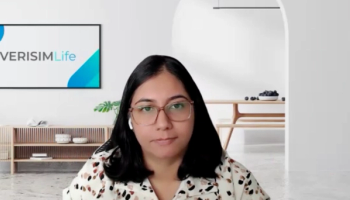
The American Journal of Managed Care
- January 2021
- Volume 27
- Issue 1
The Health Information Technology Special Issue: Innovation and Emerging Opportunities in Time of Crisis
A letter from the guest editor highlights the contributions of health information technology in improving health care delivery patient-centeredness through innovation in data analytics, connecting providers, and implementation of telehealth.
Am J Manag Care. 2021;27(1):7-8.
The 10th Annual Health Information Technology (HIT) issue of The American Journal of Managed Care® comes at a time of innovation and opportunity for HIT. The Promoting Interoperability incentive program has driven progress on interoperability, and it ties electronic health record (EHR) use more directly to quality improvement and value-based payment programs. Moreover, the 21st Century Cures Act Final Rule, issued earlier in 2020, aims to promote patients’ access to their electronic information. Given this policy context, investigators have increasingly focused on understanding how to leverage these advances to make health care more patient-centered. This trend is highlighted in the 10 articles included in this special issue, which pay particular attention to 3 areas of innovation: EHR data analytics methods, use of HIT to connect providers, and best practices in implementing telehealth. As a body of work, these articles highlight the success of technology in improving the patient-centeredness of health care delivery and also reveal future opportunities for refining the use of HIT to further support improvements in care delivery.
Developing Data Analytics Methods
As the health care system accumulates electronic data, investigators are developing innovative approaches to extract information that can benefit patient care. In an excellent example of an application of machine learning to advance selection of patients who could benefit from palliative care, Guo et al compare 4 approaches to building predictive models of all-cause mortality. In a second exemplary study that demonstrates a novel approach to utilizing unstructured text data stored in the EHR, Bako et al present findings from use of natural language processing to extract data from social worker encounter notes, which could then be classified into intervention types using a machine learning approach. Use of these emerging methods can help build value for patients from the breadth of data stored in the EHR.
Connecting Providers
The growth in HIT has enhanced the ability of providers to connect with each other through electronic consultations, or e-consults, that can make the care experience less costly and more convenient for patients. Using e-consults allows providers—typically primary care providers (PCPs)—to receive patient-specific guidance from a specialist without requiring that the patient visit the specialist. Saxon et al evaluate the growth and variation of e-consults in the Veterans Health Administration (VHA) from 2012 to 2018. Also focusing on the VHA, Whittington and colleagues investigate the implications of e-consults for cost savings. Outside the VHA, Mizes et al report on the benefits for patients associated with the use of store-and-forward image sharing for outpatient primary care e-consults with a dermatologist. Taking a broader perspective of e-consults, an article by Mechanic et al focuses on the use of TeleConnect—digital connections between specialists and PCPs—to create opportunities to build relationships and support referral networks. These articles, in combination, present a comprehensive picture of the potential for e-consults to provide a more seamless care experience for patients.
Implementing Telehealth
The disruption caused by the coronavirus disease 2019 (COVID-19) pandemic this year has taken an enormous social and economic toll. Crucially, in addition to caring for those with COVID-19, the health care system has been faced with the daunting responsibility of maintaining clinical care continuity and high-quality services despite the health risks to both patients and providers during traditional, in-person health care visits. Telehealth has been rapidly adopted as a means to achieve the goal of continuing care provision yet maintaining social distancing and preserving personal protective equipment. Although this technology can offer many benefits to both providers and patients, questions remain about telehealth and the unintended consequences of its dramatic expansion: Who may lack access to telehealth and how might this exacerbate existing disparities? How can provider and clinic characteristics affect the delivery of telehealth? What concerns do patients have and how can they be addressed? How can policy support telehealth? The articles in this special issue by Trivedi et al, Rodriguez et al, Raj et al, and Bowman et al shed light on these questions and highlight both successes and future opportunities to improve telehealth and ensure that its growth incorporates considerations of patient-centeredness and health equity.
Conclusions
The 3 areas of innovation captured in the articles comprising this special issue make clear that investigators are expanding the body of knowledge around leveraging HIT to improve the patient-centeredness of health care. These contributions come at a critical time given the challenges imposed by the COVID-19 pandemic. The science presented in this issue demonstrates the diverse ways that HIT can be adapted and modified to support targeted patient care, build connections among providers, and support patient use of telehealth.
Articles in this issue
almost 5 years ago
Using Natural Language Processing to Classify Social Work Interventionsalmost 5 years ago
Barriers to Accessing Online Medical Records in the United Statesalmost 5 years ago
Growth of Electronic Consultations in the Veterans Health Administrationabout 5 years ago
Cost Savings Associated With Electronic Specialty Consultationsabout 5 years ago
From the Editorial Board: Sachin H. Jain, MD, MBANewsletter
Stay ahead of policy, cost, and value—subscribe to AJMC for expert insights at the intersection of clinical care and health economics.






























































